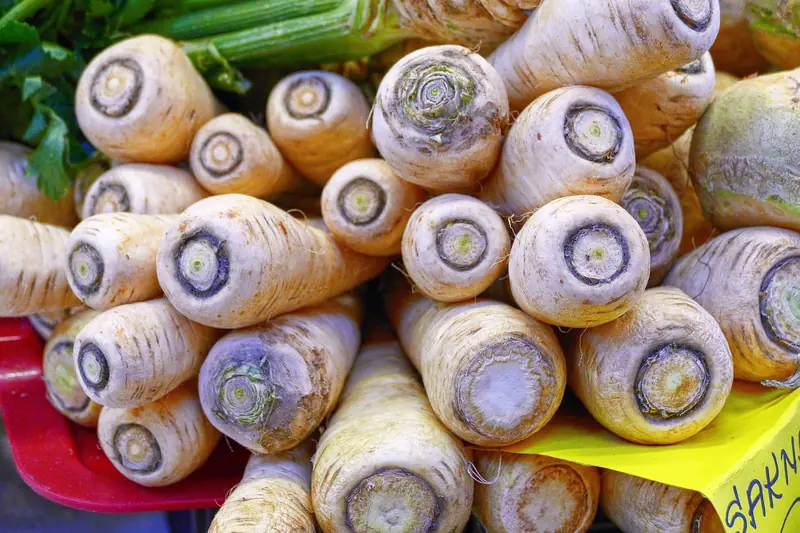
The vegetable plant with an ancient history was once known only as a cultivated crop and has only recently naturalized in the wild. The parsnip root is suitable for consumption only in the first year of this biennial herbaceous plant’s life. And that’s not all the fascinating features of the “Peruvian carrot” – the international name for parsnip, which it owes to its visual and taste similarities with its botanical “sister.”
The Gift of the Incas
The ancient culture of the arakachu was cultivated by the Peruvian Quechua tribe for its edible roots, which resembled tender carrots. Archaeologists have discovered that this plant, belonging to the celery family, was grown by humans as far back as the Neolithic period: parsnips have been found in prehistoric layers dating from 10,000 to 2,200 years before Christ. In the 17th century, this South American crop was brought to Europe, where it gained popularity due to its excellent taste and medicinal properties. The Incas’ gift turned out to be a “three-in-one” product: in dishes, parsnip root is associated with carrot, walnut, and parsley.
Thanks to its rich sweet-spicy flavor, parsnip is in demand not only as a vegetable but also as a spice: dried and ground parsnip root is widely used by chefs as a seasoning. Parsnip enhances the taste and aroma of appetizers, first and second courses: salads, broths, soups, stews, and side dishes. The “white carrot” has carved out its own niche in the culinary world due to the protein-rich root with a juicy and sharp-tasting upper part near the stem. Parsnip contains 47 calories per 100 grams. Its nutritional value is attributed to its high carbohydrate content (9.2 g per 100 g), proteins (1.4 g), fats (0.5 g), as well as fiber, mineral salts, essential oils, fructose, sucrose, folic acid, and vitamins A, B1, B2, C, K, and P.
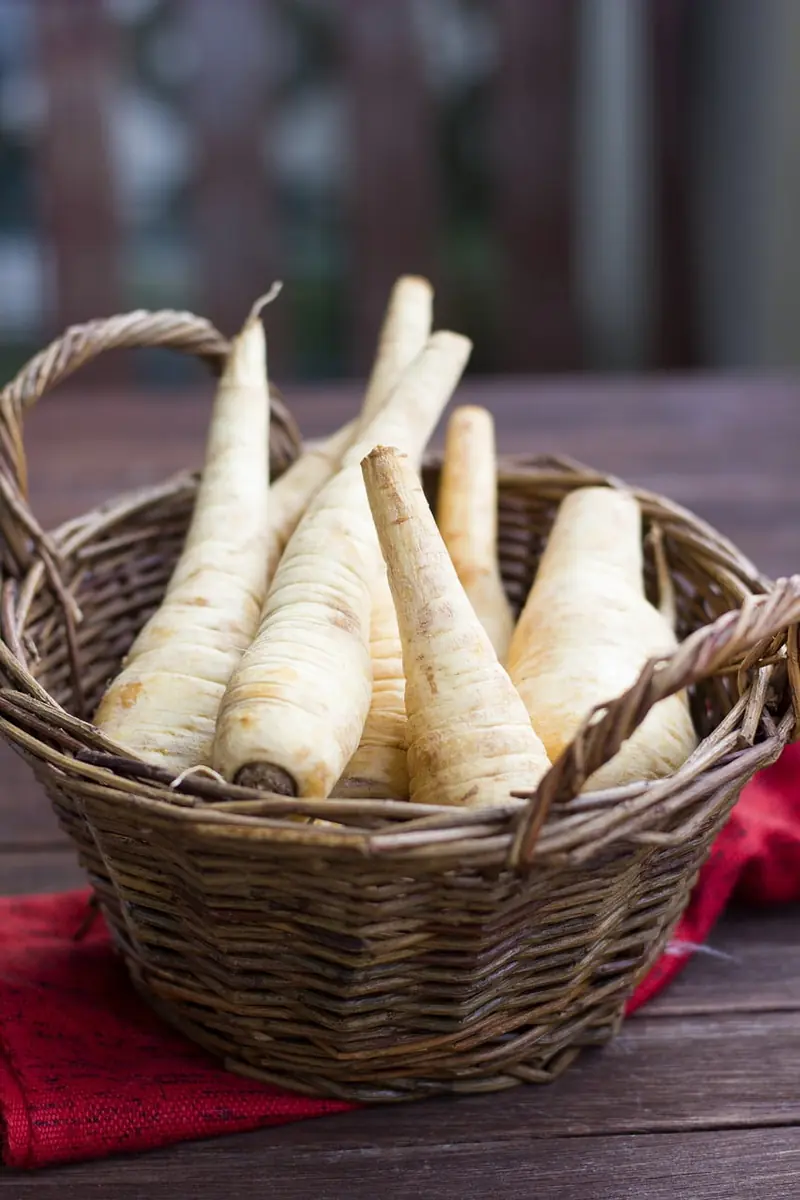
Benefits of Parsnip
This vegetable stimulates metabolism, boosts immunity, normalizes blood pressure, and promotes cardiovascular health. Parsnip positively affects digestion and the nervous system. Its well-known antispasmodic effect: grated fresh parsnip root alleviates and relieves attacks of gastric, renal, and liver colic. Parsnip contains potassium, which is valuable for the brain, making this root beneficial for cognitive disorders. Thanks to this same component, the vegetable can help eliminate excess water from the body and improve blood circulation.
Parsnip juice is rich in phosphorus and chlorine, which benefit the lungs and bronchi: it’s a healing food for those suffering from emphysema and tuberculosis. Additionally, the high concentration of sulfur and silicon in parsnip helps with brittle nails. Dietitians note that parsnip ranks high among root vegetables for its easily digestible carbohydrate content. The levels of fructose and sucrose in parsnip are three times higher than in carrots, making this vegetable recommended for diabetics. Furthermore, the high content of essential oils makes parsnip beneficial for the sexual health of both men and women: this spice enhances libido and increases arousal.
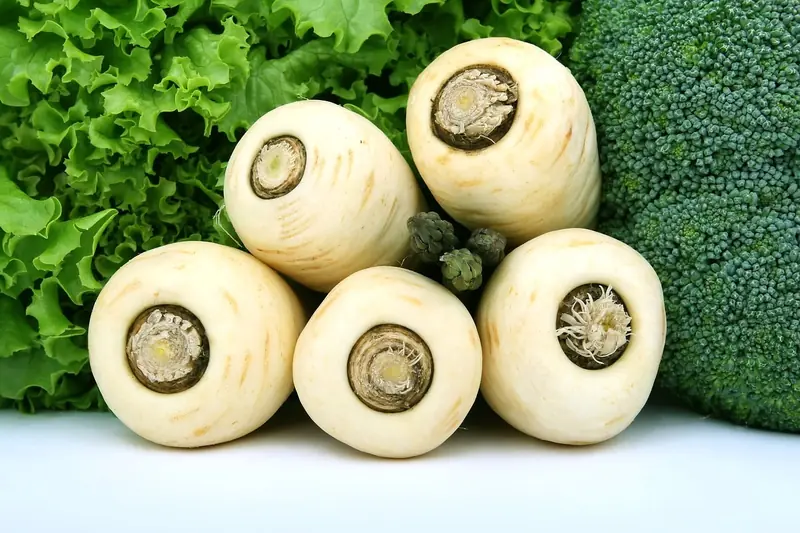
Healing Properties
The greens and roots of parsnip are used as pharmaceutical raw materials for vasodilators that prevent angina attacks in cases of cardiac neurosis, coronary insufficiency, and coronary spasms, as well as for general spasmodic phenomena and gastrointestinal diseases. Surpassing spinach in vitamin and mineral content and exceeding parsley, parsnip leaves possess the same healing properties as the root: all parts of the plant have a tonic effect, strengthen capillary walls, soothe pain, help with hallucinations, and provide an expectorant effect with mucus discharge.
In ancient times, the vegetable was used to restore strength after illness. A water infusion of parsnip root was consumed three times a day half an hour before meals: 100 ml with 1 tablespoon of honey. The treatment course lasted a month. In villages, an alcoholic tincture of parsnip root on moonshine was traditionally used to boost mood and improve appetite. The infusion of parsnip has a calming effect, making it suitable for those suffering from neurosis and insomnia. In folk medicine, parsnip is used to treat angina, hypertension, and muscle cramps. Parsnip serves as a raw material for producing medications for vitiligo and baldness.
Precautions
Furocoumarins in parsnip increase skin sensitivity to ultraviolet rays, aiding in the repigmentation of discolored skin areas in cases of vitiligo. Therefore, consuming parsnip is inadvisable for those with photodermatosis (a skin inflammation caused by increased sensitivity to sunlight).
Parsnip is not recommended for consumption by the elderly, young children, or those with individual intolerance. A contraindication for consuming parsnip is a tendency to allergic reactions. The adverse effects of parsnip on health can be felt during the summer: on hot days, the plant’s leaves release essential oil that can cause skin burns. Due to the risk associated with contact with the plant, it is essential to protect your hands with gloves.
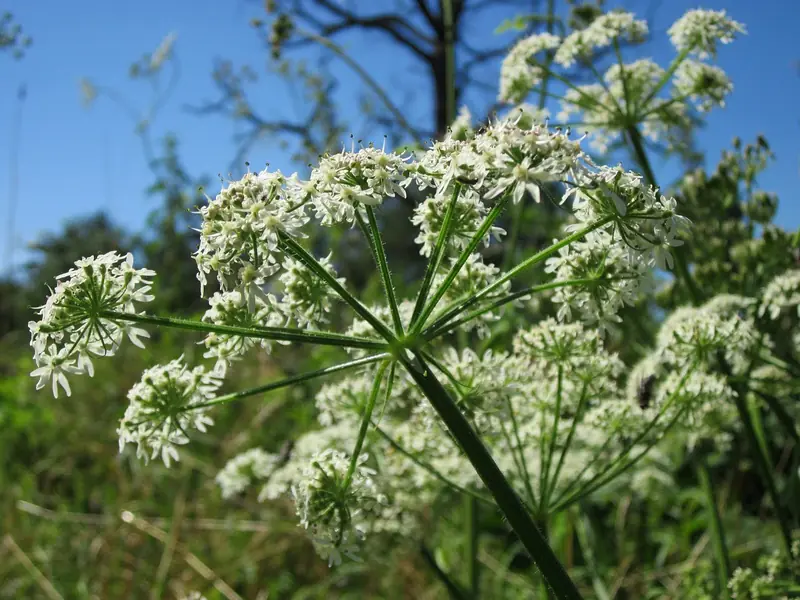
Selection and Storage
When buying “white carrots,” choose roots without signs of spoilage or damage. It’s best to opt for medium-sized vegetables measuring 25–30 cm in length; otherwise, you may end up with a coarse and tasteless product. Cleaned and dried parsnip roots can be well-stored during the cold season on a balcony or in the refrigerator. At temperatures up to +20 °C, “Peruvian carrots” retain their beneficial properties and taste for up to a year.
Dried roots can be used as a seasoning in powdered mixtures. In cooking, parsnip is in demand both dried and fresh. Homemade soup mixes can be added to flavor any vegetable dishes. In the canning industry, parsnip is a mandatory ingredient in many vegetable preserves.
Delicious Recipes
Parsnip can be added to side dishes, soups, meat, or vegetable dishes. Here are a few examples.
Spicy Vegetable Puree Soup
Ingredients: parsnip root – 4 pieces, onion – 1 piece, broth – ½ liter, milk – ½ liter, butter – 50 g, curry seasoning – 2 teaspoons, salt and pepper – to taste.
Peel and chop the parsnip and onion, then sauté them in a pot with butter until soft, adding curry a minute before they are done. Pour in the broth and milk, season with salt and pepper. Bring to a boil and cook covered for 15 minutes. Allow the soup to cool slightly and blend the ingredients with a blender.
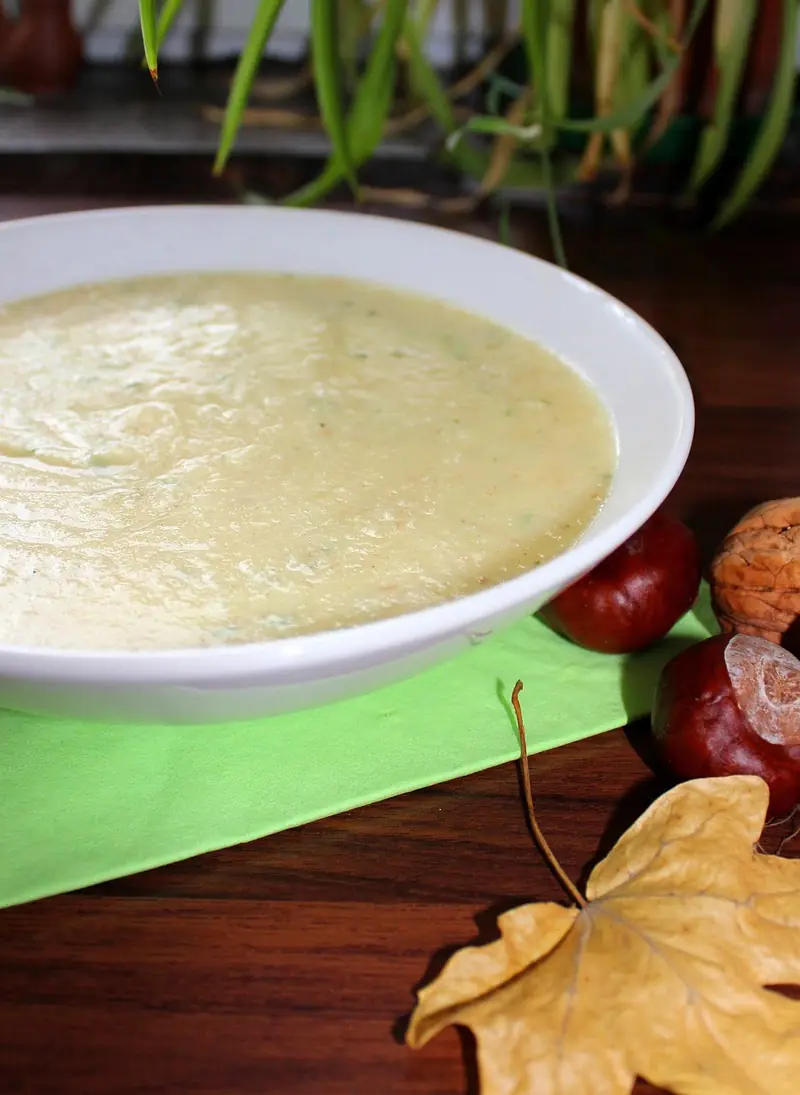
Parsnip Puree
Ingredients: parsnip – 6 pieces, butter – in a ratio of 1:10, milk, salt, and pepper – to taste.
Peel the parsnip root, cut it into pieces, and boil. Drain the excess water, add butter at a rate of 10 g per 100 g of parsnip. Then season with salt, pepper, and add milk, adjusting the puree’s thickness to your desired consistency.
Fried Parsnip with Oil
Ingredients: parsnip root – as desired, oil, salt, pepper, curry – to taste.
Slice the parsnip into thin strips, season with salt, pepper, and add curry. Mix well and place the root in a hot skillet. Fry the parsnip in a small amount of oil over high heat until golden brown. The root should become tender.
Parsnip Chips
Ingredients: “white carrot” roots – 4 pieces, oil – 250 ml, salt, spices, and herbs – to taste.
Wash the parsnip roots, dry them thoroughly, and slice them into thin rounds. Fry the parsnip in heated oil in batches. Once golden, place the chips on a paper towel to drain excess oil.
Baked Parsnip with Honey and Carrots
Ingredients: parsnip root – 2 pieces, carrots – 2 pieces, oil – 4 tablespoons, honey – 4 tablespoons, salt, and pepper – to taste.
Slice the parsnip into sticks, dip them in salted boiling water for a minute, dry them, and place them on a greased baking sheet. Season with salt and pepper, then drizzle with liquid honey. Bake in a preheated oven at 180°C for half an hour. To achieve an even color, occasionally turn the parsnip sticks to prevent burning.
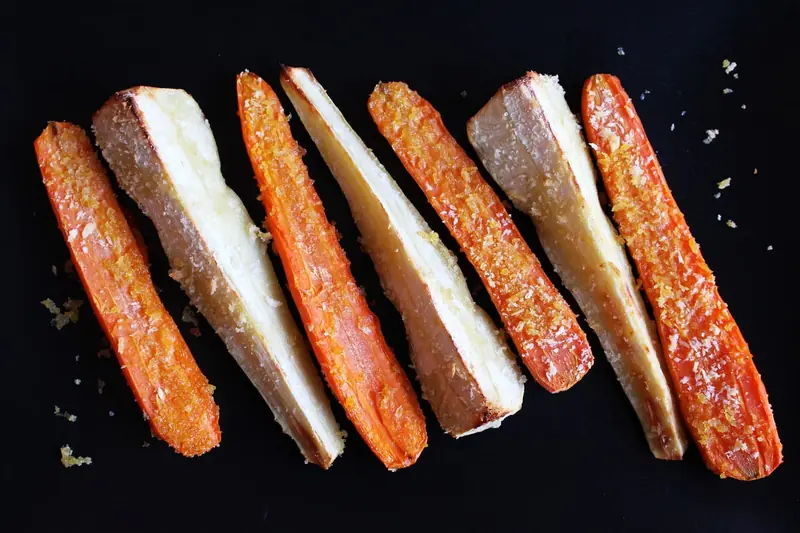
Casserole with Cheese, Parsnip, and Tomatoes
Ingredients: parsnip root – 4 pieces, tomatoes – 6 pieces, tomato juice – 1 cup, hard cheese – 100 g, butter – 50 g, breadcrumbs – 2 tablespoons, paprika – ½ teaspoon, salt, and pepper – to taste.
Slice the parsnip root into thin pieces and soak them in salted boiling water for 10 minutes. Drain the water and dry the vegetables. Grease a baking dish with oil and layer one-third of the parsnip and some sliced tomatoes. Season with salt and pepper. Pour in some tomato juice. Repeat the layering process until you run out of vegetables. Mix grated cheese with breadcrumbs and sprinkle over the top layer. Place in a preheated oven at 180°C and bake for half an hour until golden and appetizing.
Enjoy your meal!
